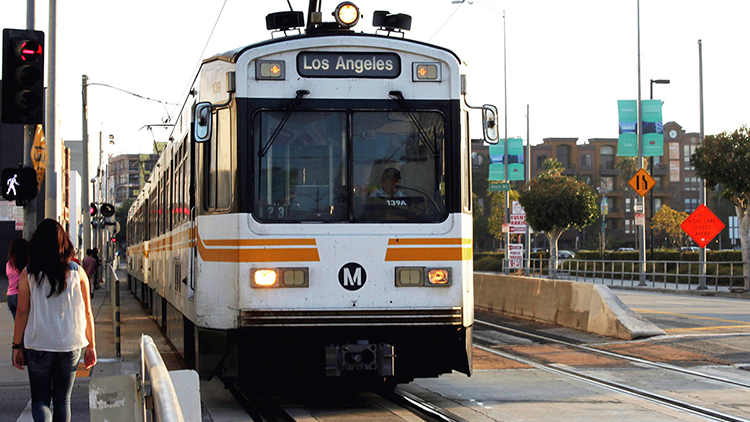The Challenge
Transportation emissions are a primary cause of Los Angeles’ notoriously poor air quality. Policymakers and “smart growth” advocates assert that intensifying land use around the public transit rail system will not only help accomplish transportation and environmental goals, but also housing and economic development goals. However, recent studies reveal that rail development is linked to gentrification and displacement of public transit’s core ridership. This project combined literature and policy review, spatial analysis and interviews to investigate underlying causes and develop future policy recommendations that prioritize social equity and minimize displacement.
Results
- 76% of zoning changes and general plan amendments that that were approved in 2013-2016 increased residential density and the majority of these projects were in transit-oriented development (TOD) areas.
- It is highly advised to implement an affordable housing TOD policy that includes value capture such as the Build Better LA (BBLA) policy, which includes provisions to capture the value of such density allowances to increase the supply of affordable housing around transit.
- Census tracts in TOD areas are significantly more likely to experience gentrification as measured by an index that includes changes in educational attainment, occupational level, race, median rent, median income and tenure.
- Qualitative data analysis reveals that transit-dependent residents stress the importance of frequent bus service and accessible walk/bikeways. It is advised to include a community-driven planning process for affordable housing and community benefits, which could promote social cohesion and neighborhood stability.
- Spatial analysis revealed a range of types of stations that vary by transit ridership, income, density and predominant zoning. An area with particular challenges for density-based incentive policies was the Purple/Red Line: Westlake MacArthur Park station area.
- For instance, the area has high percentage of public transit riders (55.69%), population density calculated by population per residential acre (93.56%), extremely low-income residents (53.53%), renters (98.8%) and rent burden (16.04%).
- Los Angeles neighborhoods and TOD station areas vary, so there is no one-size fits all solution. However, a typology of station areas organized by the above factors could aid in the implementation of an affordable housing TOD policy by identifying areas that should be prioritized.
Deliverable and Impact
Stepick developed a white paper detailing the results of her research as well as two presentations translating the above findings for an audience of city officials, residents and TOD advocates and organizers. Additionally, Stepick worked closely with the ACT-LA and Los Angeles County Department of Public Health to incorporate her findings into policy via the BBLA ballot initiative – a proposal to incentivize high job standard and the preservation/construction of affordable housing around public transit.

Fellow
Lina Stepick
Doctor of Philosophy, Sociology
Mentor
Edward Walker
Sociology, Social Sciences
Partner
Alliance for Community Transit Los Angeles (ACT-LA)
A citywide coalition of over 30 organizations in Los Angeles advocating for innovative, sustainable and equitable policy solutions to environmental and housing crises. ACT-LA envisions a Los Angeles that is a transit-rich city where all people have access to quality jobs, affordable housing, necessary social services, ample transportation options and a voice in decision-making. ACT-LA participated in the City of Los Angeles Community Plan update processes and held its first Transit Justice Summit in February 2020 with over 120 transit riders, community leaders and advocates.




